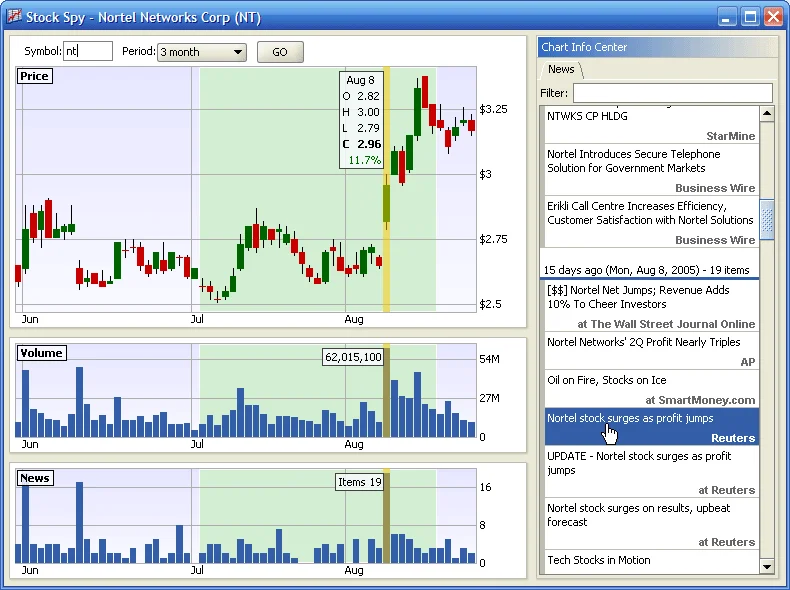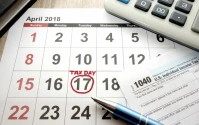The Market's Two Minds: Deconstructing a Week of Irrational Highs and Rational Fear
There's a peculiar disconnect that happens when Wall Street decides political chaos is just background noise. For a brief period, the market demonstrated a stunning capacity for cognitive dissonance. As the U.S. government shutdown clicked over to its eighth day, matching the historical average for such impasses, the S&P 500 and Nasdaq 100 did something absurd: they clinched new record highs, a development covered in the Stock Market News Review: SPY, QQQ Clinch Record Highs as Government Shutdown Extends to Eighth Day. While federal offices in D.C. sat dark and politicians traded barbs, the screens on Wall Street glowed a confident, almost defiant, green.
This wasn't a minor uptick; it was a statement. The market, in its collective wisdom, had seemingly concluded that a temporary halt in government services was an irrelevant distraction. The narrative was underpinned by what appeared to be solid fundamentals. Wells Fargo, for instance, chose this moment to upgrade its real GDP growth estimates for both 2025 and 2026 (to 2.0% and 2.3%, respectively), citing surprisingly robust consumer spending. The Commerce Department had just revised its Q2 consumer spending growth from 1.6% to a much healthier 2.5%. This is the data the bulls cling to—tangible evidence of economic momentum that a squabble in Washington shouldn't derail.
Even the specter of a market bubble, a favorite topic of Wall Street luminaries like Ray Dalio, was being calmly dismissed. Goldman Sachs' Peter Oppenheimer argued that the current AI-driven rally is fundamentally different from past bubbles. He posits that today’s tech giants have strong balance sheets and are generating actual cash flow, a stark contrast to the dot-com era's vaporware companies. It’s a compelling argument. He sees stretched valuations, yes, but not a systemic rot. I've looked at hundreds of these analyst reports, and this particular brand of cautious optimism is classic bull market psychology. It finds reasons to justify the price action. But does a strong balance sheet in one sector truly insulate the entire market from systemic political risk? And at what point does a "stretched" valuation become an outright bubble, regardless of the underlying cash flow?
The market, for a moment, seemed to think it did. It was pricing in a future of rate cuts and steady growth, effectively treating the shutdown as a television drama with a predictable, if delayed, conclusion. It was a fascinating, if unnerving, display of selective hearing.

The Tariff Tweet That Broke the Fever
Then, the script flipped. The market’s serene indifference was shattered not by the shutdown extending to a tenth day, but by a single post on Truth Social. President Trump’s threat of a "massive increase of tariffs on Chinese products" was the jolt of reality that the optimistic data couldn't absorb. The market’s reaction was immediate and brutal, as detailed in the Stock Market News Review: SPY, QQQ Plummet as Trump Threatens New China Tariffs amid Bleak Consumer Sentiment. The S&P 500 fell nearly 3%—to be more exact, 2.71%, its first loss of that magnitude since April. The tech-heavy Nasdaq 100 plunged 3.49%.
This is the core discrepancy of the week. Why did an actual, ongoing government shutdown accompanied by the first federal layoffs fail to move the needle, while a threat of future policy sent the market into a tailspin? The answer lies in the nature of the risk. A government shutdown, for all its dysfunction, is a known quantity. It’s a domestic political fight with a historical playbook; it eventually ends, back pay is issued, and the machinery restarts. A trade war with China, however, is a fundamental, structural shock to the global economy with no clear endgame. It directly impacts corporate supply chains, input costs, and future earnings in a way a temporary furlough for federal workers simply doesn't.
The market's two minds were suddenly forced to reconcile. The optimistic, forward-looking mind that was focused on GDP forecasts had to confront the fearful, reactive mind that understands geopolitical risk. And fear won, decisively. You could see it in the specific stock movements. Alibaba’s ADRs cratered over 8%, a direct hit from the tariff threat. Conversely, shares of USA Rare Earth surged over 16% as China’s counter-move—restricting rare-earth exports—suddenly made domestic producers strategically invaluable. This wasn't indiscriminate selling; it was a rapid, ruthless repricing of geopolitical reality.
This violent reversal exposes the fragility of the earlier rally. It was built on the shaky assumption that the only data that mattered was economic. But the University of Michigan’s consumer sentiment index told a different story. It came in at a bleak 55.0, a level that signals deep pessimism. Consumers, unlike the stock market, were not ignoring the "pocketbook issues" of high prices and weakening job prospects. They were already living in the world of fear and uncertainty that Wall Street only acknowledged after the tariff threat. The market wasn't leading; it was catching up, late and in a panic.
A Demonstration in Selective Hearing
Ultimately, the market isn't irrational; it's just selectively rational. For a week, it chose to listen to the calm, reassuring voices of economic forecasters and ignore the shouting match in Washington. It built a narrative of fundamental strength that was impervious to political theater. But that narrative was a luxury, sustainable only in the absence of a direct, tangible threat to corporate profits. The tariff threat wasn't just noise; it was a clear signal that pierced the bubble of optimistic indifference. The lesson here is a clinical one: markets can ignore political risk for a surprisingly long time, but they cannot ignore economic risk forever. And a trade war is, at its core, a direct and unambiguous economic threat. The only question now is which voice the market will choose to listen to next.









